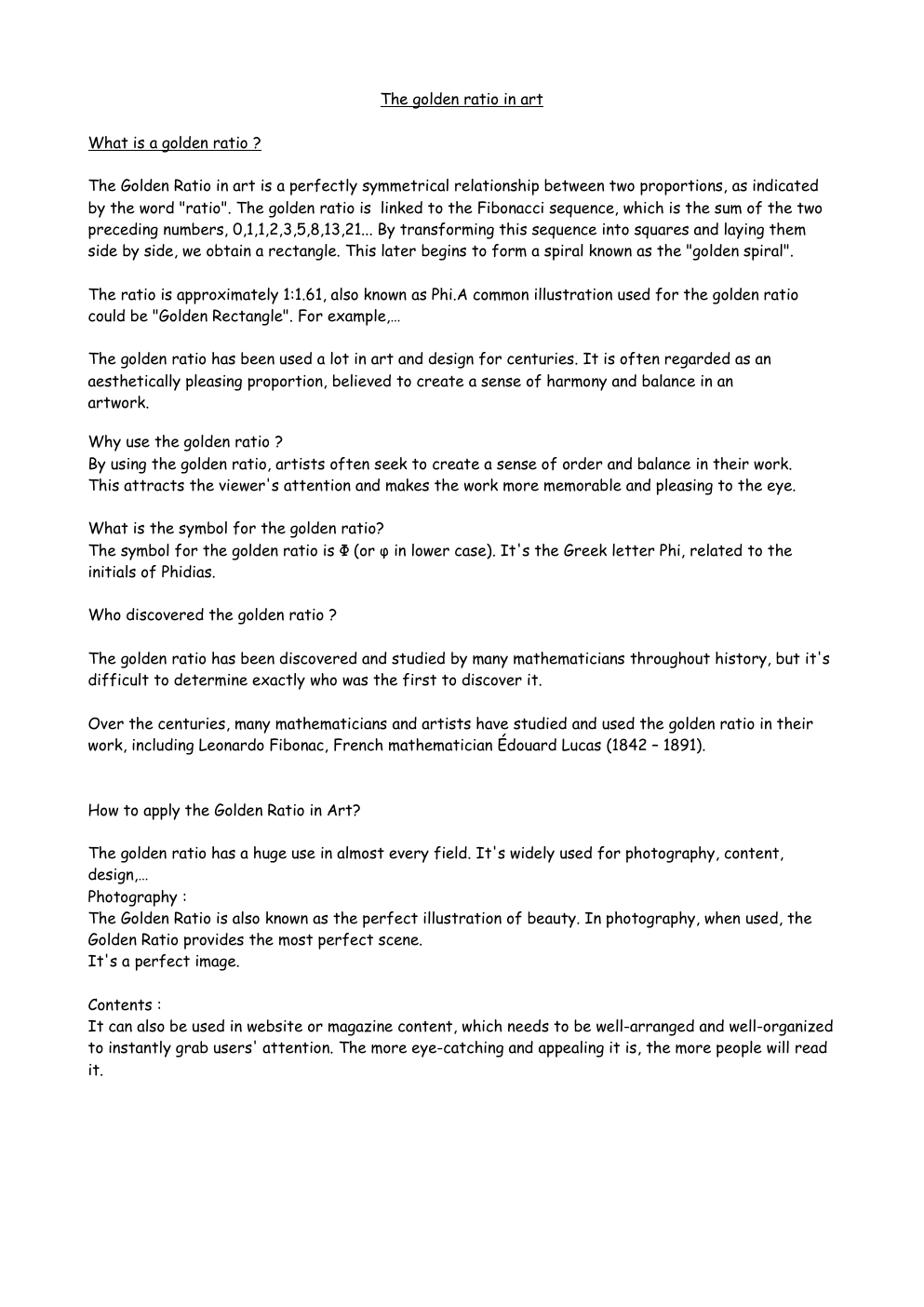The golden ratio in art What is a golden ratio ?
Publié le 03/06/2025
Extrait du document
«
The golden ratio in art
What is a golden ratio ?
The Golden Ratio in art is a perfectly symmetrical relationship between two proportions, as indicated
by the word "ratio".
The golden ratio is linked to the Fibonacci sequence, which is the sum of the two
preceding numbers, 0,1,1,2,3,5,8,13,21...
By transforming this sequence into squares and laying them
side by side, we obtain a rectangle.
This later begins to form a spiral known as the "golden spiral".
The ratio is approximately 1:1.61, also known as Phi.A common illustration used for the golden ratio
could be "Golden Rectangle".
For example,…
The golden ratio has been used a lot in art and design for centuries.
It is often regarded as an
aesthetically pleasing proportion, believed to create a sense of harmony and balance in an
artwork.alance in an
Why use the golden ratio ?
By using the golden ratio, artists often seek to create a sense of order and balance in their work.
This attracts the viewer's attention and makes the work more memorable and pleasing to the eye.
What is the symbol for the golden ratio?
The symbol for the golden ratio is Φ (or φ in lower case).
It's the Greek letter Phi, related to the
initials of Phidias.
Who discovered the golden ratio ?
The golden ratio has been discovered and studied by many mathematicians throughout history, but it's....
»
↓↓↓ APERÇU DU DOCUMENT ↓↓↓
Liens utiles
- WHAT THE?
- To what extent can social media be a tool for the public to have their say in political matters
- What are the influences of the Gilead society and how they have an impact on the woman’s lives?
- The Teachings of MuhammadDuring the early 7th century, a trader named Muhammad was meditating in a cave near Mecca in what is now Saudi Arabia, when he experienced a vision of the archangelGabriel who declared Muhammad to be a prophet of God.
- Gothic Art and Architecture I INTRODUCTION Notre Dame Cathedral, Paris Notre Dame Cathedral, in Paris, was begun in 1163 and completed for the most part in 1250.


